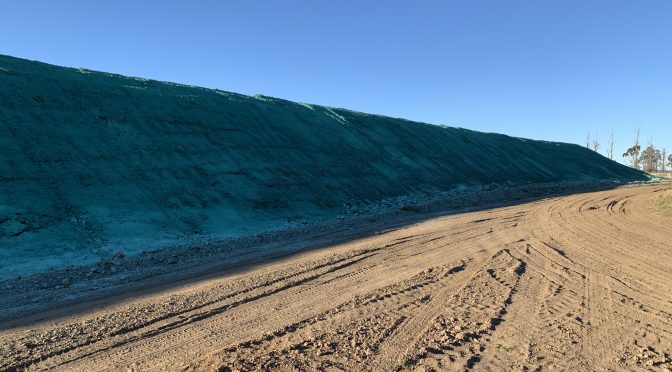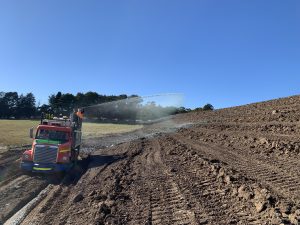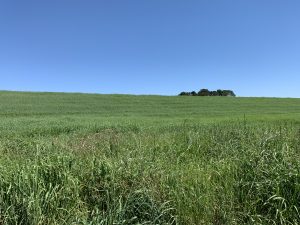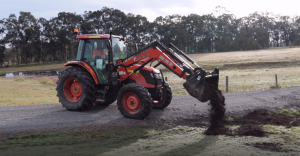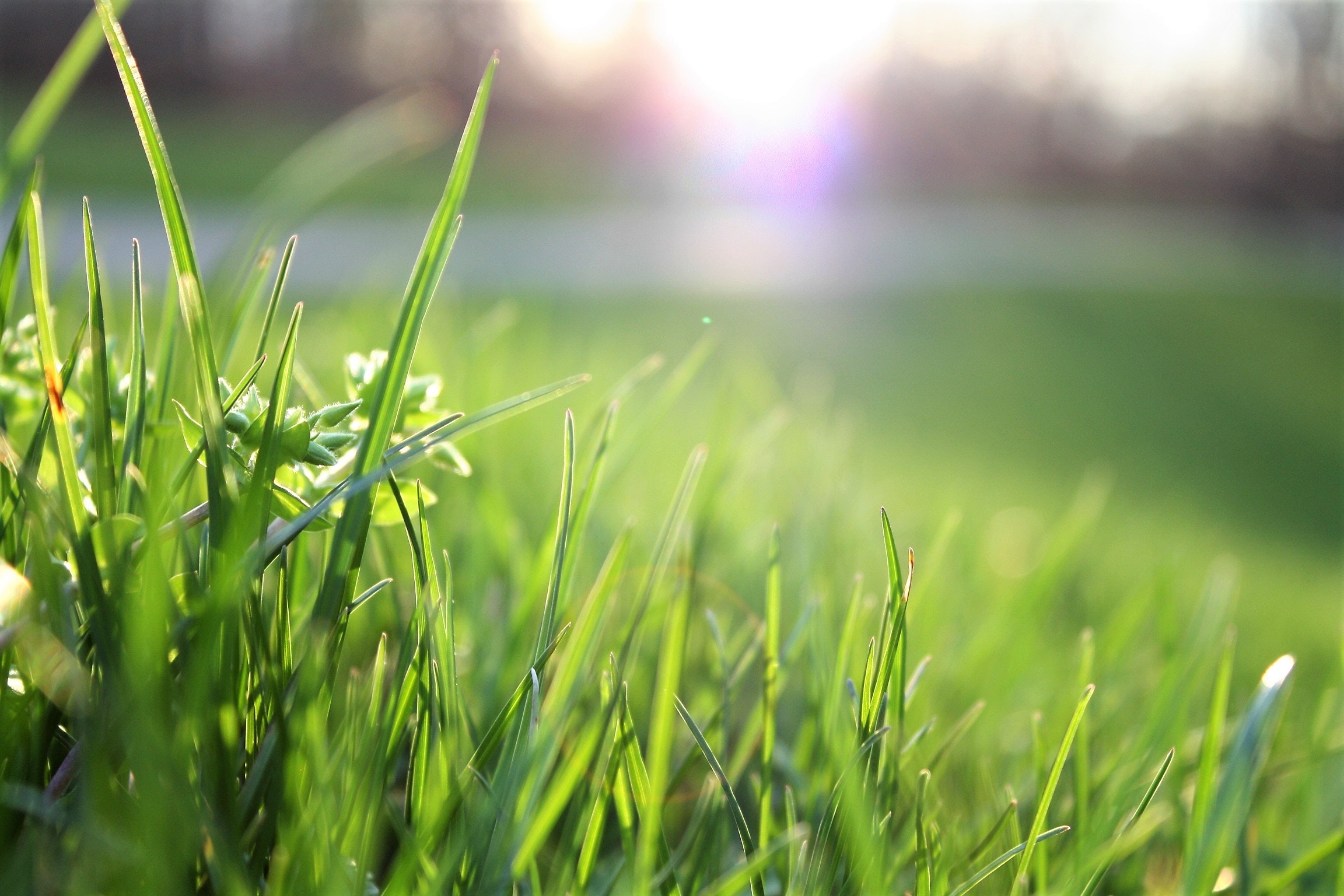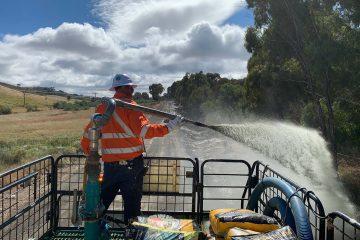By the end of this article, you will be able to identify whether you need a compost blanket and why your site could benefit from using one.
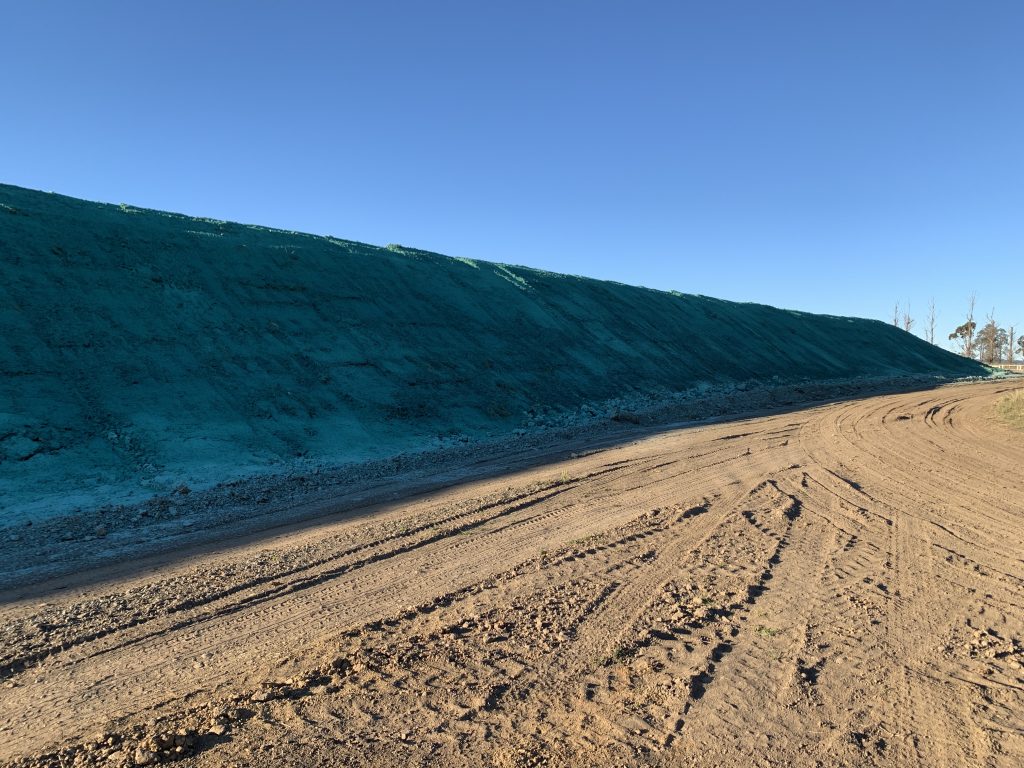
You might be an engineer, project manager, or a site representative, who is researching hydraulically applied compost blankets as a solution to your site revegetation project. But you find you are already reeling from the amount of information available. Don’t worry, we get how you’re feeling. It was a lot to take in when we first started in 1981, and a lot has changed since then! But the one thing that has stayed the same is the misinformation or lack of understanding throughout the industry regarding what your site needs to achieve practical completion.
One of the main issues in the industry is failed long-term grass growth from using generic applications, which could easily be avoided if only the right application was selected for the site. We understand it can be confusing trying to choose the right application, especially when the wrong decision can lead to failed growth and costly reworks. A common misconception is that not all applications are the same, some of which do not contain the necessary ingredients for long-term growth.
At Valley Hydramulch & Revegetation (VHR), we have dealt with this type of enquiry multiple times over and have developed mixes based on tried and tested applications that have proven success rates across varying conditions over the past 40 years. We want to help you make the selection process easier and are happy to provide our experience and knowledge, to help you realise the following:
- What is a compost blanket?
- Why would you need a compost blanket?
- Who is a compost blanket a good fit for?
- Why they could be the best option for you.
- And of course, the cost involved.
By the end of this article, you will be able to identify whether you need a compost blanket and why your site could benefit from using one.
What is a Compost Blanket?
You will often hear people use the term spray grass or standard hydromulch, which is a mix of grass seeds, fertilisers, cellulose fibre, binder, and water. Compost Blankets are similar but have added ameliorants in their mix, which change the properties of the soil. These ameliorants include gypsum, lime, and compost, which help to promote long-term grass growth. The application is applied to the soil either out of a cannon or hand-held hose, depending on the access restrictions.
The materials and quantities used in compost blankets are derived from testing the soil and then designing the appropriate mix to suit. Compost Blankets are also free from hazardous additives, chemicals, and toxins and do not require maintenance watering.
The success of your application will be dependent on the ingredients used in the Compost Blanket and adequate surface preparation. The mix can be altered to ensure it is suitable for the site conditions present, which allows for the best chance for successful results to occur. Typically, 70-80% of germination is achieved within four to six weeks depending on climatic conditions and rainfall received.
Why would I need a Compost Blanket?
If you’re starting a new project, compost blankets can help you set the stage for successful grass growth. Other companies offer their own products at cheaper prices, but these applications do not always lead to the most effective solution or materials being used. In fact, you can end up spending more money further down the track if the grassing on your project fails because it wasn’t suited to the site conditions.
Compost blankets are a good fit if you are looking to get your project back on track with rectification works of other failed applications, and to encourage long-term, sustainable grass growth.
Who is a Compost Blanket a good fit for?
Compost Blankets are a good fit for:
- Erosion Control and Dust Suppression
- Projects requiring sustainable long-term growth
- Little to no maintenance watering costs
- Failed standard hydromulch applications
- Poor quality soils and subsoils
- No Topsoil
- And defects Rectification.
Erosion Control & Dust Suppression
If you need to address soil erosion on your site, then a Compost Blanket might be the best fit for you. These applications have a polymer binder added to their mix, which, together with the cellulose fibre and added ameliorants, forms a protective layer on the soil surface, holding the seed in place. This allows for faster germination and protects the soil from the elements, preventing the application along with sediment and debris from being washed away by heavy rain. Compost Blankets can also aid in dust suppression by working to hold down the soil particles, allowing the application to remain intact in strong winds as well.
Sustainable Long-term Growth
Projects requiring long-term growth would benefit from using a Compost Blanket as they have the ingredients, which contain the necessary nutrients for improving the health of the soil and creating a proper seedbed for the native grass seeds to germinate. By obtaining a soil test, you can create a site-specific mix and avoid further losses as this will tell you exactly what ingredients you need in the application to make the grass grow.
Little To No Maintenance Watering
All you have to do is apply the product and wait for rainfall, depending on the site conditions. For instance, if you apply a compost blanket, which still follows the TfNSW R178 Specification, and it is used on ideal soil, with good preparation, then it would not have to be watered and would remain viable for at least several months. Adequate rainfall will be enough to induce germination and growth.
Failed Standard Hydromulch Applications
An application can fail when it does not address the needs of the site soil or the conditions present. This is because not all applications are the same, as different companies prefer to use their own or certain suppliers’ specific materials. Different materials result in varying levels of mix suitability for your site. For instance, standard hydromulch applications do not contain any of the additives necessary for long-term growth such as lime, gypsum and compost. That is why it is always important to carry out soil testing to avoid using the wrong mix for your site.
The Oxley Highway to Kundabung project presented a variety of potential issues during the revegetation of the site and we were required to develop a solution to failing standard applications on site. Therefore, we tailored a compost blanket to the site soil conditions, which provided successful growth for the site even with heavy rain and poor surface preparation.
Poor Quality Soils and Subsoils
The additives in compost blankets work to improve the microbiology of the site soil and provide the nutrients necessary for germination and growth. Therefore, as long as you get a soil test done you do not need to have quality soil to start with as the application can be tailored to be site-specific and will provide everything the grass seeds need to grow.
No Topsoil
Long-term solutions can still be achieved without topsoil however, the grass that grows may not achieve the same results as it would with a layer of topsoil present. Topsoil is the layer in which the seed germinates and grows, and provides sufficient nutrients and organic matter to support long term growth. Topsoil is important when trying to grow grass as, without this layer of nutrients, grasses will likely struggle in the long term.
Defects Rectification
Compost blankets can be used to address rectification work but the most important thing will be to make sure you fully understand why it didn’t work in the first place. The easiest way to do this is with site soil testing. This will tell you exactly what the soil needs in order to fix the defects. Other reasons for defects may be due to not properly preparing the surface before application. This can harm the success of the grass growth.
For the application to be given the best opportunity for it to work, areas need to be lightly scarified or furrows created prior to the application. This is to ensure the application both penetrates the surface and creates a cover, whilst also allowing it to be absorbed into the topsoil in the event of rainfall. This will prevent the application from being washed away.
Questions to ask yourself
- Have you gathered enough information and determined that the compost blanket might be the best fit for you?
- Did you want an option that doesn’t require excessive maintenance and watering costs?
- Have you previously had a failed standard application like hydromulch, and want to know how to make the grass grow?
- Have you got poor-quality soil that you need effective grass cover on?
- Does your project need rectification?
If you answered yes to any of these questions, it might be the right time for you to get in contact with one of our team to talk about the suitability of using one of our compost blankets on your site.
If after reading through this information, you decide that you are just after a standard application such as hydromulch or hydroseed, then a compost blanket is likely not going to be the best fit for you. Check out our Services page for more information on these types of applications.
How much does a Compost Blanket cost?
The cost of a compost blanket will be affected by your site soil, the location and the size of your project and can cost as little as $0.80 to $5.00 per square metre.
The quality of your site soil will determine the varieties and quantities of fertilisers and ameliorants that are needed in your mix. A simple soil test will determine what ingredients will be needed to achieve the desired results. For a more detailed breakdown of costs watch our ‘what does a revegetation application cost?’ video.
How do I buy a Compost Blanket?
When you’re ready to buy, the first step is to fill out our contact form with the details of your project, including the location, size, and type of application you require. Then a member of our team will get back to you within 2 business days just to clarify any details or request more information to provide you with an accurate price. Once this is completed, we will then send you a competitive quote. Once the quote has been accepted, we can schedule your job into our upcoming work.
Is a Compost Blanket the right fit?
Typically 70-80% of germination is achieved within four to six weeks of applying a compost blanket, depending on climatic conditions and rainfall received. The success of the project is also dependent on the ingredients used in the mix and whether they are suitable for the site. That’s why we always recommend soil testing as different sites and soil types call for different additives to improve the soil microbiology. A compost blanket isn’t always right for everyone but it can be a good fit for:
- Erosion Control and Dust Suppression
- Projects requiring sustainable long-term growth
- Little to no maintenance watering costs
- Failed standard hydromulch applications
- Poor quality soils and subsoils
- No Topsoil
- And defects Rectification
Now you are well equipped with the information you require to make an informed decision on whether a compost blanket is the right fit for your site. What’s next you might ask? Well, you can start by researching different suppliers to find the right one for your project. They all offer different applications and it can be confusing trying to choose the right provider but we have made it simple for you in this one-page document, Top 7 Questions You Should Ask Your Revegetation Provider (1min read).
If you are interested in our application’s prices, check out our Pricing page and use the cost calculator for a rough cost estimate. Otherwise, you can fill out our contact form or give us a call on (02) 4988 6111, and one of our friendly team will be happy to chat with you.
